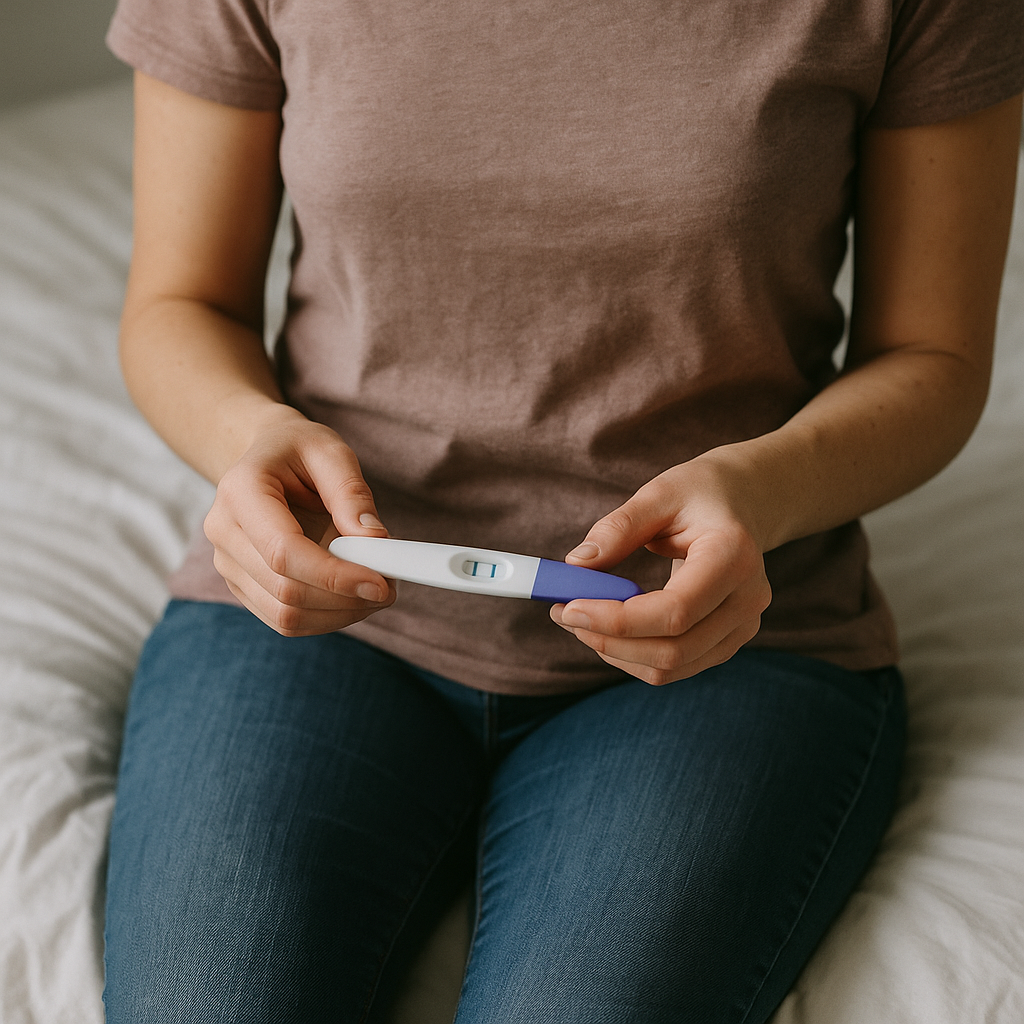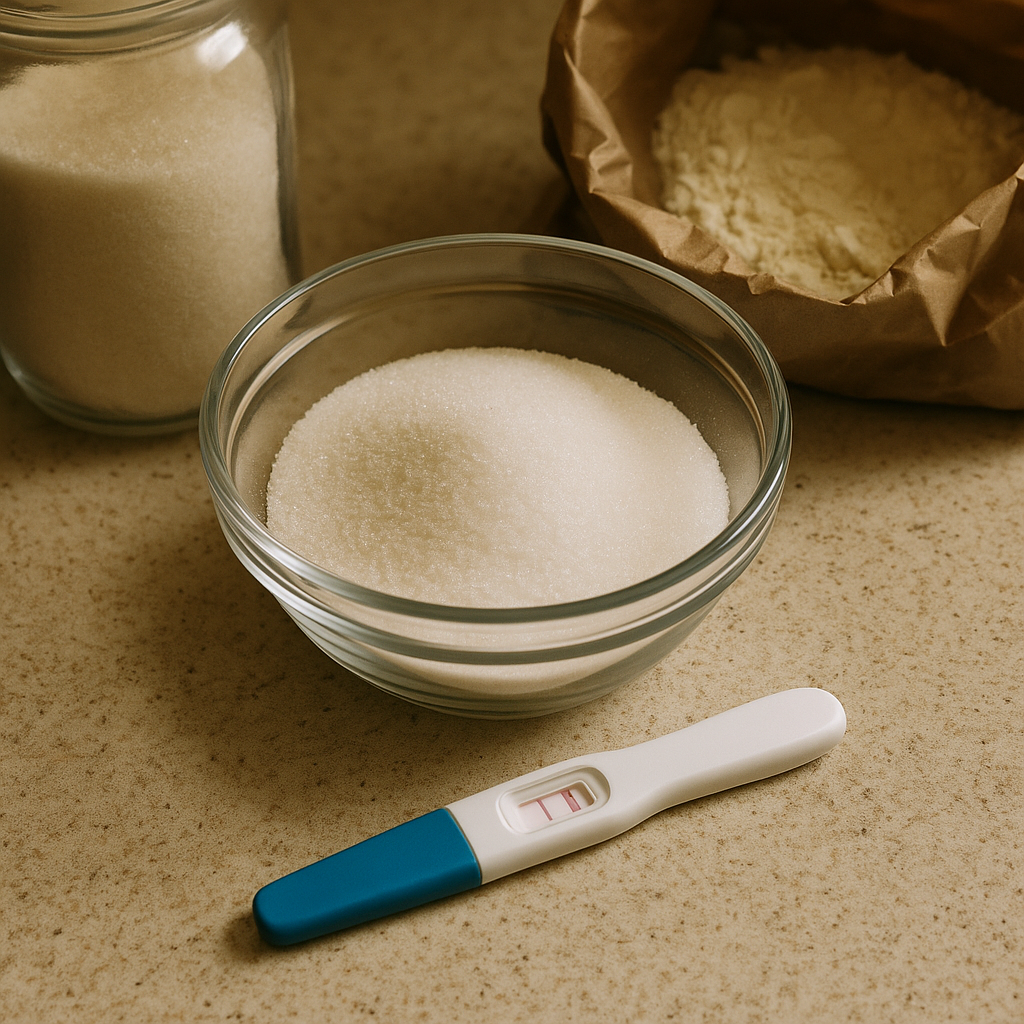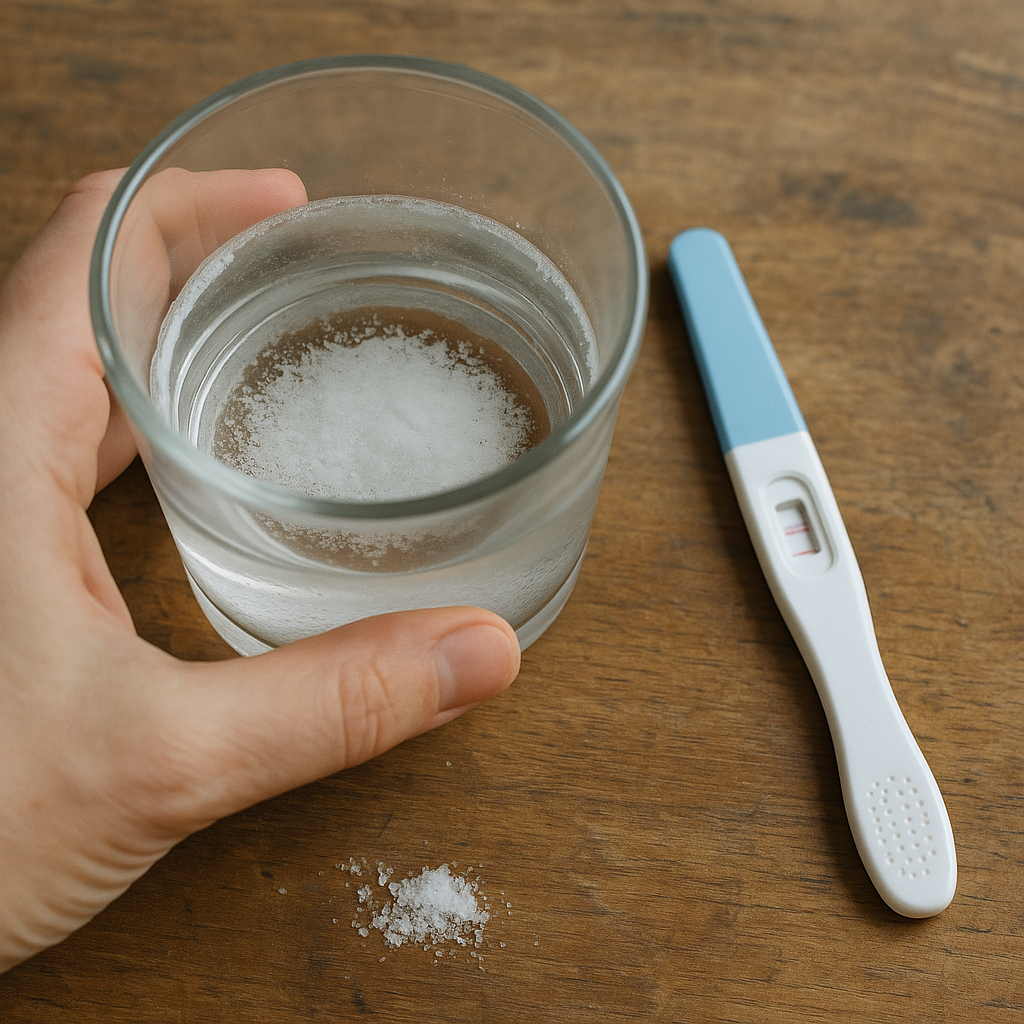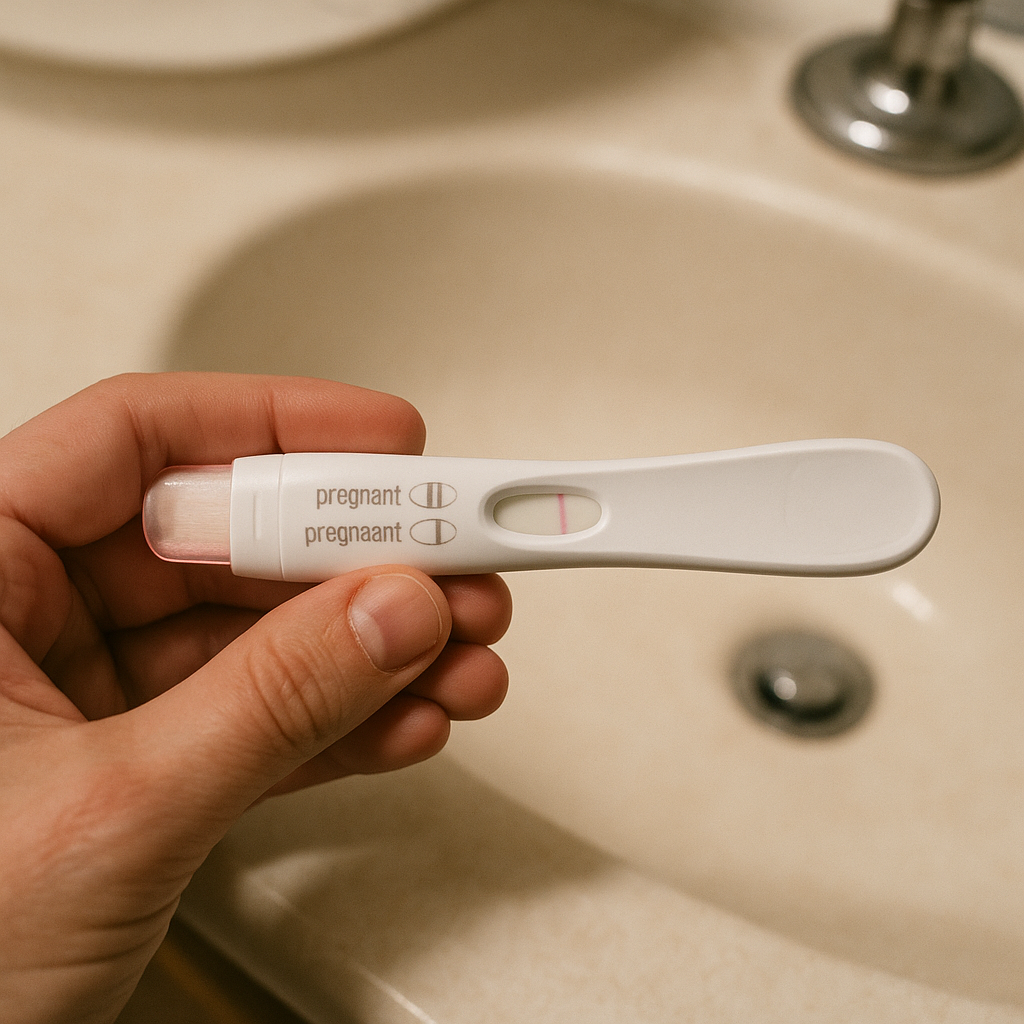Ask Ayurvedic doctor a question and get a consultation online on the problem of your concern in a free or paid mode. More than 2,000 experienced doctors work and wait for your questions on our site and help users to solve their health problems every day.
Shop Now in Our Store
How to Check Pregnancy at Home: Natural and DIY Methods

Wondering how to check pregnancy at home without rushing to the pharmacy or clinic? You're not alone. Many women find themselves searching for answers at odd hours or in situations where privacy is important. Whether you're waiting for your period or just feeling “off,” understanding at-home methods can provide some peace of mind.
From the home pregnancy test you buy at the store, to a homemade pregnancy test passed down from your grandma, there are actually quite a few ways to explore what's going on with your body. In this guide, we’ll explore natural signs, DIY pregnancy test methods like the sugar pregnancy test, salt pregnancy test, and even Ayurvedic traditions. These tools aren't just about curiosity—they're about empowerment. So, let’s dive in and discover how to listen to your body and try a natural pregnancy test at home.
Early Signs of Pregnancy
Before grabbing a test (or raiding the kitchen for baking soda), your body often sends early clues. These signs vary from woman to woman, but some are surprisingly consistent.
Dosha Changes and Subtle Symptoms
In Ayurveda, conception isn't just physical—it involves shifts in energy and dosha balance. You might feel more “kapha” in your body: sluggish, full, heavy. Breasts may feel tender or slightly swollen. Nausea could creep in, even before you miss a period. And that odd metallic taste? Yeah, that’s a thing too.
Natural Intuition and Energy Shifts
Believe it or not, many women “just know” they’re pregnant even before science confirms it. You might feel a sudden dislike for your morning coffee or get unusually emotional watching cat videos. These aren’t just mood swings—they can be subtle signals of hormonal change.

Homemade Pregnancy Test: Sugar, Salt, and More
Long before modern kits existed, women used common household items for pregnancy detection. These aren’t scientifically proven, but they’ve been part of oral traditions in many cultures.
Sugar Pregnancy Test
To try the sugar pregnancy test, all you need is a clean bowl and some white sugar. Add a tablespoon of sugar and pour in a sample of your morning urine. If the sugar clumps instead of dissolving, it’s said to indicate a positive result. Supposedly, the hCG hormone prevents the sugar from breaking down easily.
Salt Pregnancy Test
For the salt pregnancy test, use a couple spoons of table salt and your morning urine. Wait 2–3 minutes. If the mix turns milky or cheesy (gross but true), that’s considered a home positive pregnancy test. If it just stays watery, it’s probably negative.
Baking Soda Pregnancy Test
The baking soda pregnancy test relies on a fizzy reaction. Take two tablespoons of baking soda in a cup and add your urine sample. If it fizzes like soda, that’s said to mean you’re pregnant. If it’s flat, likely not. Just be sure your baking soda isn't old and flat itself.
Soap and Toothpaste Tests
Okay, this one’s more folk remedy than science. Add urine to a small amount of white toothpaste (non-gel) or soap lather. Wait a few minutes. Bubbling, foam, or color change might indicate a positive. Might. Results vary and these tests are far from reliable.

Natural Pregnancy Test Methods in Ayurveda
Long before modern science stepped in with plastic test strips, ancient systems like Ayurveda had their own ways of detecting pregnancy. These methods were more about tuning into the rhythms of the body than peeing on a stick.
Monitoring Subtle Daily Rhythms and Delays
One of the first signs according to Ayurveda is niyam badhata — the disruption of a woman’s natural daily patterns. If you're someone with a very regular cycle and you suddenly miss a period, it's not just a coincidence. Add to that changes in appetite, new cravings, and shifts in energy that don't match your normal self. Some women even report vivid dreams or feeling unusually connected to nature (yes, seriously).
Using Pulse Reading (Nadi Pariksha)
Ayurvedic practitioners have long used nadi pariksha—pulse diagnosis—to detect pregnancy. When a woman is pregnant, her pulse reportedly feels fuller and more rhythmic, almost like two pulses layered on each other. It’s a skill that takes years to master, though, so probably not a DIY thing unless you’ve trained in it. Still, it’s a fascinating reminder that your body gives signals, even subtly.
Diet and Lifestyle Cues in the First Few Weeks
Sudden repulsion to certain foods (like garlic or egg), strong smells making you nauseous, and fatigue outta nowhere are all early indicators. Ayurveda also looks at how your digestion behaves—like bloating, weird bowel habits, or a feeling of internal heat. If you’re noticing a combo of these things, and it’s not PMS, hmm… you might want to test.

How to Check Pregnancy at Home Without a Kit
Don’t have a pharmacy kit on hand? No worries. You can still do a few things to listen to your body and figure things out—at least enough to know whether to take the next step.
Morning Urine Consistency and Smell
It’s not glamorous, but your first pee of the day holds clues. Pregnancy hormones are more concentrated in morning urine, which is why most at home pregnancy test kits recommend using that. Even without a test, some women say their pee smells different (stronger, almost sweet-ish) and appears cloudier. Strange, yes. Real? Apparently.
Observing Basal Body Temperature (BBT)
If you’ve been charting your basal body temperature, here’s a neat trick. After ovulation, your temp rises slightly. If it stays elevated for more than 16 days, there’s a decent chance you’re pregnant. You’ll need a BBT thermometer for this though—not your usual fever-checking one. This method works better for women who already track their cycle.
Natural Cervical Mucus Observation
Cervical mucus can tell you a lot—seriously. In early pregnancy, you might notice thicker, creamier discharge that doesn't dry up like usual after ovulation. It may even be more than usual, and stick around longer. Keep in mind though, every woman’s body is different.

Best Way to Take a Home Pregnancy Test
Now let’s talk timing and technique—because yes, how to check pregnancy at home correctly does matter. Doing it wrong could give you a false result, and who needs that stress?
Best Time of Day and Cycle Timing
Hands down, morning is the best time. Especially if you’re still early—like within a week of your missed period. And yes, can I take a pregnancy test at night is a fair question. You can, but results may be fainter or inaccurate due to diluted urine. Wait until morning if you can hold off.
Tips for Getting Clear Results Without Errors
Follow these tips for better results:
-
Don’t chug water before testing—it’ll mess up the concentration of hCG.
-
Use a timer instead of guessing. Most strips need 3–5 mins.
-
Don’t read it too early or too late. That ghost line 20 minutes later? Yeah, ignore it.
-
Always read instructions, even if you’ve done it before.
Conclusion
Knowing how to check pregnancy at home isn’t just about having the right test—it’s about knowing your body, being mindful of natural signs, and having a few creative tools in your back pocket. Whether you're using a home pregnancy test from the store or trying a DIY pregnancy test like the sugar, salt, or baking soda pregnancy test, there's something incredibly powerful about taking control of your own reproductive health.
And while these natural pregnancy test methods might not be 100% accurate, they can offer a glimpse into what’s going on before you confirm it with a lab test or doctor visit. Ultimately, the best home pregnancy test is the one that gives you clarity when you need it most—and sometimes, a little old-school intuition is more powerful than plastic strips.
So next time you’re wondering, “Can I take a pregnancy test at night?” or searching for the best way to take a pregnancy test, come back to this guide. Bookmark it, share it, pass it on to a friend. You never know when it might come in handy.
FAQs
How to test pregnancy with a hand?
This old-school method involves checking the position of your cervix manually. Supposedly, if it’s soft, high, and closed, it might suggest early pregnancy. But here's the thing—it’s super hard to get this right unless you’re really familiar with your cycle and anatomy. So it’s more myth than method for most people.
What is the maximum delay in periods if not pregnant?
Stress, changes in weight, diet, or even travel can delay your period. A delay of up to 7–10 days can happen without pregnancy. But if it's been longer than two weeks, it’s time to either test or see a doctor. Better safe than freaking out every time you go to the bathroom, right?
How to know pregnancy by pulse?
In traditional systems like Ayurveda, the nadi or pulse is used to detect pregnancy. A skilled practitioner may feel a double beat or fuller pulse pattern. But again, don’t try this at home unless you’ve got serious training—it’s more art than science.
How many days to confirm pregnancy?
Usually, you can get accurate results with a home positive pregnancy test about 10–14 days after ovulation, or a few days after your missed period. Testing too early might give you a false negative, so patience really does pay off (we know, easier said than done).
Final Thoughts
So now you know—from how to check pregnancy at home naturally to picking the best home pregnancy test kit, and even giving the baking soda pregnancy test a go—there are tons of ways to tune into your body and figure out what’s up.
If you found this guide helpful, share it with someone who might need it. Whether it’s a sister, best friend, or even your curious younger cousin, this info is meant to be passed on. Got more questions or stories to share? Drop them in the comments or send us a message—we’d love to hear from you!
This article is checked by the current qualified Dr Sujal Patil and can be considered a reliable source of information for users of the site.

